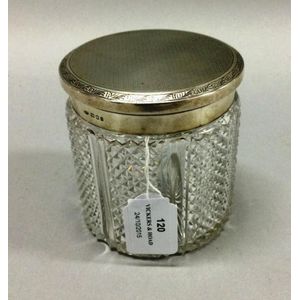Giltwood Aubusson Tapestry Settee, Louis XVI Style
You must be a subscriber, and be logged in to view price and dealer details.
Subscribe Now to view actual auction price for this item
When you subscribe, you have the option of setting the currency in which to display prices to $Au, $US, $NZ or Stg.
- Giltwood - Giltwood is used to describe a gold finish on furniture and other decorative wooden items, whereby a thin sheet of gold metal, called gold leaf, is applied to the surface for decorative purposes.
Unlike gilding, where the gold leaf is applied over a coating of gesso, with giltwood the gold leaf is applied direct to the surface, or over a coat of linseed oil gold leaf adhesive.
Most gold-finished mirrors will be gilded, whereas furniture with gold highlights will have the gold applied through the giltwood method. - Putto / Putti / Amorino / Amorini - A putto (plural: putti) or amerino (plural: amerini) is a cherub or cupid frequently appearing in both mythological and religious paintings and sculpture, especially of the Renaissance and Baroque periods and later used as a decorative element in the design of furniture, ceramics, statuary etc. They are usually depicted as chubby males, or of indeterminate gender, often with wings. Their depiction may represent an association with love, heaven, peace or prosperity.
- Acanthus - A stylized leaf motif, one of the primary decorative elements of classical Greek and Roman architecture, derived from the genus of flowering plants in the family Acanthaceae, native to tropical and subtropical regions of the Mediterranean area. It is a common element in classical Greek and Roman design, and is often seen in Corinthian and Composite order columns and used as a decorative element in English, European and Australian furniture, particularly on the curve of a leg, and as decoration for a corbel.
- Parcel Gilt - An item or component that is partially gilded, the purpose of the gilding being to accentuate the decoration. For example a silver vessel may have gilded highlights, or the leg of a table or chair may have gilded carvings.
- Mouldings - Decorative strips, deriving from architectural features, that may be either applied separately to a piece of furniture or worked directly on to the carcase. Mouldings are found on cornices or pediments, around the edges of panels and drawer fronts, and around both the tops and bottoms of chests, bookcases and other cabinet furniture. Until the late 19th century mouldings were worked by hand, using a shaped moulding plane. Latterly, they have been shaped by machine.
This item has been included into following indexes:
- seating, lounges, settees and suites - couches, lounges and settees 288
- settees and sofas
Visually similar items

A full circle diamond Eternity ring, comprising fifty six princess cut diamonds totalling 6.72cts, mounted in 18ct gold, ring size Q-R

A 14ct gold diamond ring; set with five graduated old European cut diamonds estimated as 2 x 0.12ct, 2 x 0.17ct, 1 x 0.37ct. J/K Si/Pique. Size M. Weight 5.6g.

French brass folding fan fire screen, approx 63 cm high

Antique hallmarked sterling silver lidded cut crystal dressing table jar, approx 10.5 cm high
